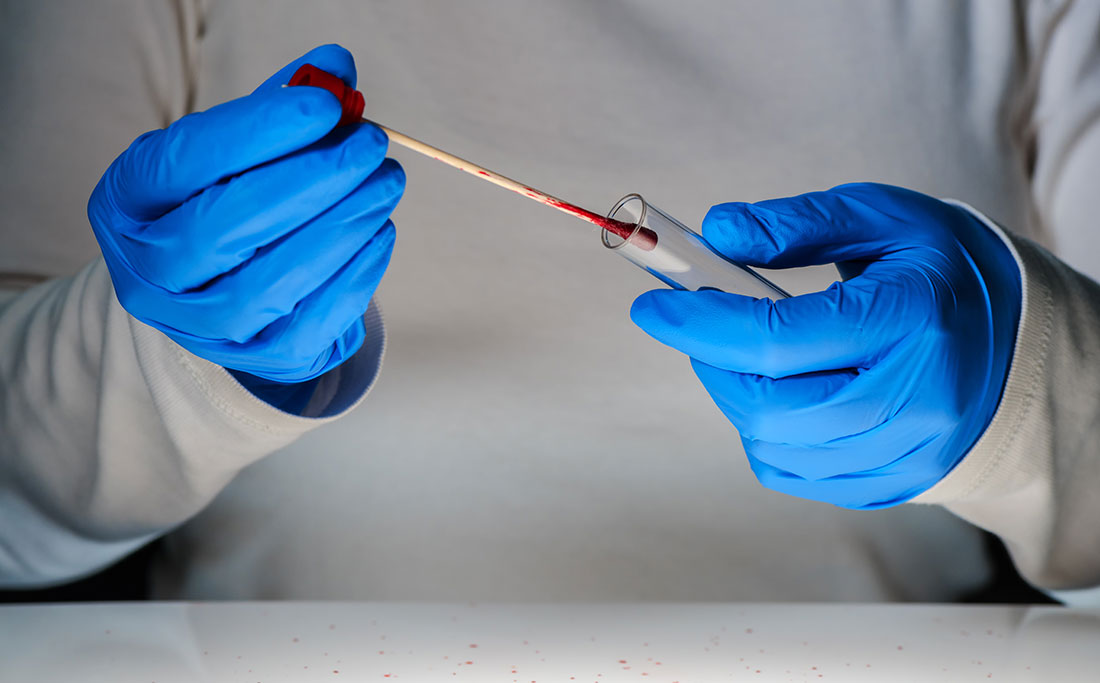DNA is an essential component of forensic science since it can vindicate the innocent and convict the guilty. By processing and analyzing the biological evidence delivered to the crime site, the genetic material in DNA enables the identification of the culprit.
Dr. Alec Jeffreys made the initial discovery of DNA fingerprinting in 1984. The initial DNA fingerprinting process has undergone numerous adjustments and improvements throughout the years due to technological advancements in genetics.
DNA profiling is now so accurate and sensitive that it cannot be used alone in a criminal inquiry in the United Kingdom; it must be used in conjunction with other techniques. However, when used, it enables a biological sample discovered at a crime scene to be connected to the person from whom it originated.
It is crucial to keep in mind that the degree of amplification used to analyze a DNA sample makes the process incredibly sensitive, which is something to keep in mind when utilizing DNA profiling to solve a criminal case. Within a few hours, a single DNA molecule can produce an easily measurable amount of DNA. Given their extraordinary sensitivity, it must be underlined that extreme caution must be exercised when analyzing these DNA samples to prevent forensic evidence or other items from contaminating the results.
DNA Evidence at the Crime Scene
These biological components can be in the form of blood, saliva, semen, buccal swabs, vaginal swabs, or even touch DNA. Sometimes the ingredients are placed in minute amounts on a surface without the perpetrator’s knowledge.
An individual can be identified by the processing of DNA from biological fluid samples and DNA statistical interpretation. This is accomplished through DNA databases like CODIS and by swabbing known profiles from the crime scene. When a known profile is not accessible, CODIS, which has reference profiles from previous offenders, can be utilized to look up the questioned profile.
DNA as a Potent Tool for Identifying Humans
Today, thousands of DNA tests are used in just North America by hundreds of forensic labs in both the public and private sectors, as well as paternity and paternity testing labs. Law enforcement has benefited greatly from the use of computer databases that contain DNA profiles of criminals who have been found guilty as well as biological samples taken from crime scenes and those who have been apprehended for a crime.
In addition, forensic DNA testing has accomplished more than just punishing the guilty for their crimes. Additionally, the piece of proof has cleared the innocent of any wrongdoing. Before the use of DNA typing techniques, inmates had been wrongfully convicted as the consequence of other sorts of evidence or unreliable witnesses.
Nevertheless, more than 200 of these people, including death row inmates, were exonerated thanks to the effectiveness of postconviction DNA testing from materials that were maintained for many years. Because DNA has been successfully used as evidence in court for decades to convict the guilty and clear the innocent, judges, attorneys, and detectives frequently seek DNA as the primary piece of evidence from a crime scene.
Why DNA cannot be the only Form of Evidence in a Criminal Case.
DNA alone cannot be the only factor in determining a person’s guilt in a crime because of how complicated DNA profiling is and how crucial it is to keep innocent people out of jail and punish those who actually committed the crime. Even if DNA is discovered at a crime scene, it cannot be used to determine guilt, according to a Forensic Science Regulator assessment from 2012. It is not always clear from DNA where it comes from, how it got there, or when. Therefore, rather than being the only factor in resolving a crime scene investigation, DNA needs to be considered in the context of other pieces of evidence.
It is essential to remember that the solution to any criminal inquiry lies in understanding the history of any forensic evidence discovered at a crime scene. Due to the fact that each person’s DNA is distinct and leaves a trail wherever they go, it can occasionally be problematic to link DNA obtained at a crime scene to the actual crime.
Therefore, it is crucial that an investigator evaluate when and how that DNA might have arrived at the crime scene while examining the scene. Such inquiries are vital because they allow for the understanding and potential disclosure of information that may assist in removing any DNA that is irrelevant to the case or determining whether the background DNA is the result of secondary transfer or contamination.
The OJ Simpson case Linder (2018) is an illustration of how DNA evidence was insufficient to convict a defendant. Numerous kinds of blood profile matches, in-depth discussions of DNA profiling, and examples of how matches were discovered were presented in court during Simpson’s trial.
The provided proof established a match between Simpson’s blood and the blood traces discovered at the site. The pair of shoes that Simpson owned and the footprints found at the crime site even matched. The prosecutor’s numerous blood profile demonstrations, such as a match between Simpson’s blood sample and two droplets of blood discovered at the crime scene with bloody fingerprints, did not, however, impress the jury.

This was because the evidence presented could not have demonstrated beyond a reasonable doubt that Simpson was the person who committed the crime or that he was actually present when the murder occurred. It is crucial to keep in mind that DNA evidence is utilized alongside other types of processes since this may have been avoided if the defense had not relied only on the DNA evidence.
By considering the context of the evidence, one can also prevent situations like the one described above. As an investigator, it is crucial to consider whether OJ Simpson’s blood may have arrived there in another way. Could it have been accidentally transferred? Could there be a motive to frame Mr. Simpson? These are the types of inquiries that ought to have been made during the investigation.
The Significance of a “DNA Match”
When DNA profiles from suspect and known samples are available, one of the three outcomes—inclusion, exclusion, or inconclusive—is indicated in a report. The presence of inclusion or a match between two short tandem repeat (STR) profiles suggests that the same genotypes are seen on their peaks, and the technical variations between the profiles may be explained.
Exclusion or a nonmatch indicates that the samples come from various origins since it explains how the genotypes in the profiles differ. While inconclusive means that there is not enough data to draw a conclusion and that there is a dispute between two DNA experts throughout the technical evaluation procedure.
Additionally, a “match” can point to one of three scenarios: either the suspect deposited the sample, either the suspect did not deposit the sample but the laboratory processing resulted in a false positive, or the suspect did not deposit the sample but just so happened to have it. Nevertheless, the questioned and the known samples are reported as a nonmatch regardless of how many STR loci match when two genotypes of the samples are compared.
Conclusion
To sum up, it is safe to say that DNA profiling and DNA analyses have significantly advanced over the past few decades. For the criminal justice system to function fairly and accurately, DNA technology is crucial. If there is no evidence or no witnesses came forward, the odds of catching the criminals are increased even by DNA profile evidence from biological samples.
No matter how precise DNA profiling and analysis are, a crime scene investigator must always keep the surrounding circumstances of forensic evidence in mind. Before presenting anything to the court, questions like “when and how did the evidence get there?” must be posed and answered.
More crucially, any DNA evidence that is offered to the court must be gathered in conjunction with other types of evidence and not on its own. This is it for preventing situations like the OJ Simpson case. It is also very important to remember that any evidence sent to the lab must be properly sealed to prevent contamination.
Any forensic scientist in charge of the evidence must exercise extreme caution once it reaches the lab to prevent any errors from happening by making sure their procedures have been thoroughly tested and are carried out using calibrated equipment. A series of carefully monitored procedures must then be performed in order to prevent cross contamination.
Each of the procedures should be followed to guarantee that any crime scene investigation is conducted properly and, hopefully, lead to the conviction or release of an innocent individual.
